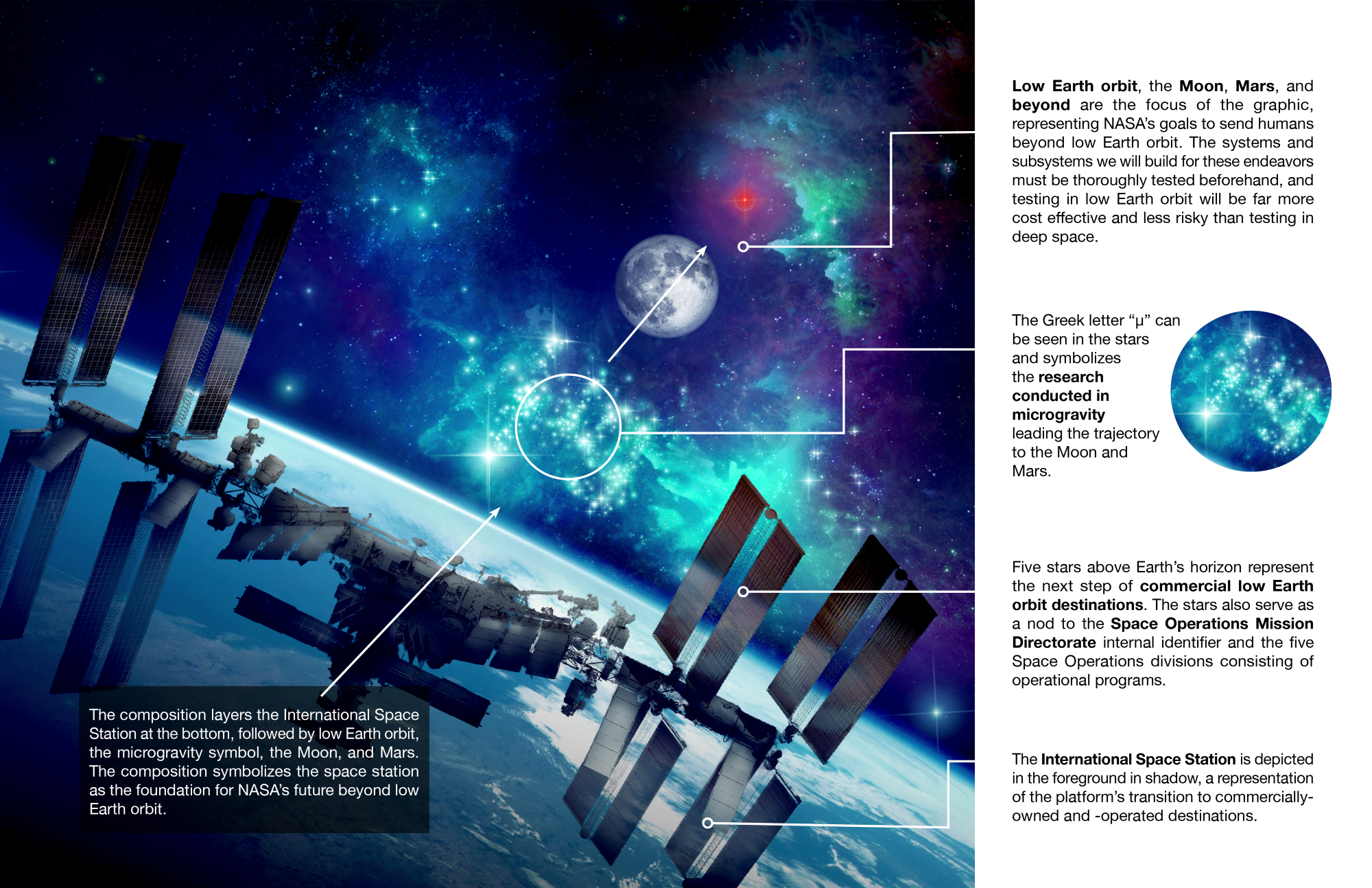Low Earth Orbit Microgravity Strategy
PHOTO COMPOSITE | ILLUSTRATION | LAYOUT DESIGN
NASA’s Low Earth Orbit (LEO) Microgravity Strategy builds on the agency’s extensive human spaceflight experience to advance future scientific and exploration goals. From Mercury and Gemini to Apollo and the Space Shuttle, NASA’s human spaceflight programs have established a foundation for understanding how humans can live and work in space. The International Space Station, now in its third decade of operations, has been vital for microgravity research, providing insights and technology beneficial to life on Earth. As the space station nears the end of its operational life, NASA plans to transition to a new low Earth orbit operations model to continue leveraging microgravity benefits.
The LEO Microgravity Strategy focuses on several objectives: preserving and expanding research capabilities, advancing national and international space leadership, developing critical technologies for deep space exploration, and inspiring future generations through impactful space missions. By leveraging commercial and international partnerships, NASA aims to maintain its leadership in microgravity research and ensure continued benefits for humanity.
Working with former NASA Deputy Administrator Pam Melroy and NASA Creative Director David Rager, the key art and layout were created using NASA photos with illustrative touches.
The LEO Microgravity Strategy key art symbolizes the importance of the International Space Station and research in microgravity for NASA’s future beyond low Earth orbit. To reach the Moon and Mars, systems built for these endeavors must be thoroughly tested beforehand, and testing in low Earth orbit will be far more cost effective and less risky than testing in deep space.


